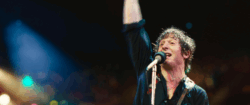The National Gallery’s modern art space endures perpetual remodeling. Most recently, the industrial white walls have turned a calmer, grayish blue, and visitors to the East Wing will find Jasper Johns’ dynamic targets and mechanical abstractions from last spring replaced by the composed depictions of Edward Hopper’s America.
Though Johns’ targets share the same “iconic” label as Hopper’s Nighthawks, the latter has created a deep imprint on American culture. As an iconic realist in a century of abstract and post-modern American art, Hopper is sure to please a crowd alienated by modern shows. As accessible as the Wyeths and Normal Rockwell in our minds, his representational art still ranks among other trends of 20th century high art.
Hopper’s catalogue presents a versatility of treatment that steers it away from boring illusionism. The brushwork on consistent motifs such as the female figure in dim, interior light sometimes flirts with abstraction in its looseness. Other times, the precise naturalism underscores his composition.
Among his artistic feats is Hopper’s ability to diversify his scenes. Even amidst a room full of New York apartment facades, an unusual vantage point or the framing of a rooftop railing creates a unique sense of movement throughout the exhibit. No less important are the thematic implications that such composition puts forth: the sense of voyeurism in looking into other’s windows is particularly compelling.
Though Hopper generally separated his work into two primary settings, city buildings and seaside homes, his mature work often allows the two to mingle. By isolating and recycling several key subjects, the collection uses established vocabulary to gain a variety of effects. Conversation especially occurs between the artificial lights of the gas station and the glow of the fading sky in Gas.
Rooms full of alternative media both remind the viewer of his multifaceted career and illuminate aspects of his more typical works. His prints seem like more personal exercises in preparation for his larger-scale paintings; watercolors—which from a slight distance look astonishingly clear and realistic—isolate the element of strong light contrasts. In addition to the placement of works and the design of the space, the National Gallery carefully rides the line between making its voice constant and not overbearing and intrusive.
Hopper’s narratives lend themselves to interpretation, as we are often reminded by the museum placards. Always a comfort to museumgoers, these particular cues steadily suggest the common interpretations of loneliness and isolation.
The exhibit does not hold back in offering small quotes from the artist himself. Most refreshing are the times in which the curators allow the usually silent artist to respond to the constant interpreting and hypothesizing thrown at us. “The loneliness thing is overdone,” Hopper reassures us.
The Edward Hopper exhibit runs through Jan. 21, 2008 at the National Gallery of Art, 4th and Constitution Ave NW. Admission is free. For more information, see www.nga.gov.





